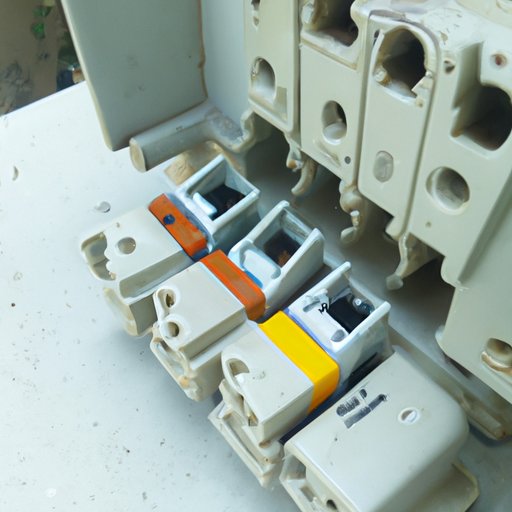Introduction
Circuit breakers are an important part of any home’s electrical system. They act as safety switches that disconnect power when too much current flows through the circuit. This prevents wiring from overheating and causing a fire. But what do you do when the circuit breaker trips and won’t reset?
When a circuit breaker trips, it means that there is too much electricity flowing through the circuit. The breaker will automatically shut off the power to prevent damage to the wiring. However, if the breaker won’t reset, it could be a sign of a more serious problem. In this article, we’ll explore why a circuit breaker may not reset and how to troubleshoot and fix the issue.
Troubleshooting a Tripped Circuit Breaker That Won’t Reset
The first step in troubleshooting a tripped circuit breaker that won’t reset is to check the circuit breaker panel. Make sure all the breakers are in the “on” position. If they are, then the next step is to identify the problem circuit. Look for any labels on the breaker panel that indicate which circuit controls which area of the house.
Once you’ve identified the problem circuit, turn off all the other circuits and then try to reset the breaker. If it still won’t reset, then there is likely an issue with the wiring or other components of that circuit. You’ll need to determine what the issue is in order to resolve it.
How to Fix a Circuit Breaker That Won’t Reset
The first step in fixing a circuit breaker that won’t reset is to assess the electrical load. Check to see if the circuit is overloaded by adding up the wattage of all the appliances and devices connected to it. If the total wattage is more than the breaker’s rating, then the circuit is overloaded and needs to be upgraded.
If the circuit isn’t overloaded, then the next step is to replace the circuit breaker. If the breaker is outdated or faulty, it may not be able to handle the current load. You can purchase a new breaker at your local hardware store. Once you’ve installed the new breaker, try to reset it. If it still won’t reset, then you may need to upgrade your entire electrical system.

Why Circuit Breakers Trip and Refuse to Reset
There are several reasons why a circuit breaker may trip and refuse to reset. The most common cause is an overloaded circuit. When too many appliances and devices are connected to a single circuit, the breaker will trip to prevent the wiring from overheating.
Another reason why a circuit breaker may trip is a short circuit. A short circuit occurs when two wires touch each other, allowing electricity to flow in an unintended path. This causes an overload on the circuit, resulting in the breaker tripping.
Ground faults are another common cause of tripped circuit breakers. Ground faults occur when an appliance or device is improperly wired, allowing electricity to flow to the ground instead of back to the breaker. This also causes an overload, resulting in the breaker tripping.
Understanding the Reasons Behind a Circuit Breaker Not Resetting
In order to understand why a circuit breaker won’t reset, it’s important to examine other electrical components. Check for loose wires, broken connections, and any signs of corrosion. It’s also important to inspect the wiring for any signs of damage. If the wiring is frayed or cracked, it could be preventing the breaker from resetting.
Finally, it’s important to evaluate any outdated or faulty circuit breakers. An old or faulty breaker may not be able to handle the current load, resulting in the breaker tripping and refusing to reset.

DIY Tips for Resetting a Tripped Circuit Breaker
If you’re comfortable working with electricity, there are a few DIY tips for resetting a tripped circuit breaker. First, make sure to shut off the power to the circuit before attempting to reset the breaker. Then, test for voltage with a voltage tester to make sure there is no power flowing through the circuit. Finally, reset the breaker by flipping the switch to the “on” position.
Conclusion
If your circuit breaker won’t reset, it could be a sign of an overloaded circuit, short circuit, or ground fault. To troubleshoot and fix the issue, start by checking the circuit breaker panel and identifying the problem circuit. Then, assess the electrical load and replace the breaker if necessary. If you’re comfortable working with electricity, you can try a few DIY tips for resetting the breaker. Otherwise, it’s best to contact a professional electrician for assistance.
(Note: Is this article not meeting your expectations? Do you have knowledge or insights to share? Unlock new opportunities and expand your reach by joining our authors team. Click Registration to join us and share your expertise with our readers.)
